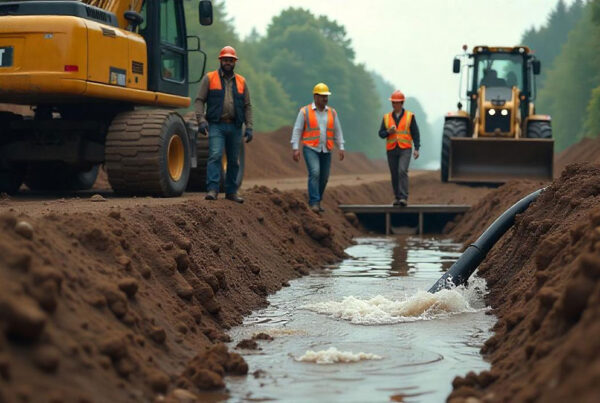Water management is a critical aspect of construction, mining, and environmental projects, particularly in areas with high water tables or excessive groundwater. Dewatering systems play a crucial role in removing excess water from excavation sites, underground structures, and industrial facilities. This article explores the various types of dewatering systems, comparing passive and active solutions for effective water removal.
Understanding Dewatering Systems
Dewatering systems are designed to lower the water table or remove groundwater from excavations, construction sites, or industrial facilities. These systems prevent water ingress, maintain site stability, and facilitate construction progress by creating a dry working environment.
Passive Dewatering Solutions
1. Gravity Drainage: Gravity drainage relies on natural slopes or gradients to allow water to flow away from the site. This passive solution is suitable for shallow excavations or areas with gentle slopes.
2. Sand Drains: Sand drains consist of vertical columns filled with coarse sand or gravel. These drains enhance drainage by providing a pathway for water to flow vertically and horizontally, promoting dewatering through natural filtration.
3. Wellpoints: Wellpoints are shallow groundwater extraction wells installed around the perimeter of an excavation site. They lower the water table by creating a localized depression, allowing water to flow towards the extraction points for removal.
Active Dewatering Solutions
1. Dewatering Pumps: Dewatering pumps are mechanical devices used to remove water from excavations or construction sites. These pumps can be submersible or surface-mounted and are equipped with motors to facilitate water extraction.
2. Deep Wells: Deep wells are installed to intercept and remove groundwater from deeper aquifers. These wells use submersible pumps to lift water to the surface for discharge, effectively lowering the water table over a larger area.
3. Vacuum Dewatering: Vacuum dewatering systems create a negative pressure zone within an excavation, accelerating water flow towards extraction points. These systems are efficient for rapid dewatering of large areas and can significantly reduce water removal time.
Choosing the Right Dewatering System
The selection of a dewatering system depends on factors such as site geology, water table depth, project duration, and environmental considerations. While passive solutions are cost-effective and environmentally friendly, they may be less suitable for high-volume dewatering requirements or challenging soil conditions. Active dewatering systems offer greater control and flexibility, making them ideal for large-scale projects or time-sensitive applications.
Conclusion
Dewatering systems are essential for managing groundwater and maintaining dry working conditions in construction, mining, and industrial projects. Whether utilizing passive solutions like gravity drainage or active systems such as dewatering pumps, the goal is to efficiently remove water to ensure site stability and productivity. By understanding the differences between passive and active dewatering solutions, project managers can choose the most suitable system to meet their specific water removal needs and achieve project success.






